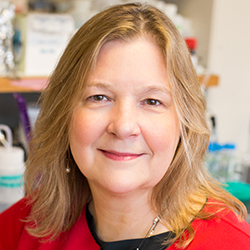Marco Nie Named New Chair of Northwestern Civil and Environmental Engineering
Nie will succeed Kimberly Gray, effective September 1, 2025

Northwestern Engineering’s Yu (Marco) Nie has been named chair of the McCormick School of Engineering’s Department of Civil and Environmental Engineering, effective September 1, 2025.
Nie, professor of civil and environmental engineering, studies how to characterize, model, and manage transportation systems. Drawing upon interdisciplinary tools from optimization, network science, traffic flow theory, economics, and statistics, Nie develops quantitative methods that guide decision-making toward more efficient, reliable, and sustainable movement of people and goods.
“Since joining Northwestern in 2006, Marco has been a leading researcher and educator who has helped to further Northwestern’s leadership in transportation through his strategic and holistic approach,” said Christopher Schuh, dean of the McCormick School of Engineering. “I have no doubt that he will now apply these skills to guide the Department of Civil and Environmental Engineering to even greater heights.”
Nie succeeds Kimberly Gray, Roxelyn and Richard Pepper Family Chair in Civil and Environmental Engineering and professor of civil and environmental engineering, who has held the position since 2015. Gray also holds courtesy appointments in chemical and biological engineering at Northwestern Engineering and law at Northwestern’s Pritzker School of Law.

During her tenure, Gray led notable changes to the department’s research and education enterprises. She updated the department’s research areas to move beyond traditional civil and environmental domains, instead emphasizing a systems-thinking research approach that promotes cross-disciplinary collaboration among faculty and students to spur innovation. She also transitioned the department’s Architectural Engineering and Design program from a certificate to a minor and expanded its course offerings. She recruited several new faculty members, boosting the department’s leadership in areas such as materials, urban planning and design, geomechanics, and microbial ecology.
“Kimberly has made a transformative impact on civil and environmental engineering research and education at Northwestern Engineering during the last decade,” Schuh said. “The department is well positioned to lead in tackling one of the biggest challenges we face: making cities and environments resilient and adaptive to our changing climate. I greatly appreciate her leadership and commitment as chair.”
Gray is a professor of environmental engineering with expertise in environmental chemistry and nanotechnology. The overarching goal of her work is to reinvent the flow of materials and energy in cities based on ecological principles to combat climate change, especially its disproportionate effects on under-resourced communities.
In 2024, Gray published the results of a five-year, department-wide project to reimagine the United States’ 280 embassies and consulates around the world in the face of a rapidly changing climate. The work, performed in collaboration with the US Department of State and architecture firm Krueck Sexton Partners, offers a roadmap to ensure embassies and consulates remain safe, secure, and functional while increasing their resilience to climate change, technological advancements, population shifts, urbanization, and resource scarcity. The innovations identified by the authors have important implications for any urban district or town — large or small.
Nie was one of nearly a dozen Northwestern civil and environmental engineering researchers who contributed to the project.
Among his honors, Nie has received the Best Paper Award from Transportation Research Part C and the Stella Dafermos Best Paper Award from the TRB Transportation Network Modeling Committee of the National Academy of Sciences’ Transportation Research Board. He holds a BS in civil engineering from Tsinghua University, China; a master’s in civil and environmental engineering from the National University of Singapore; and a PhD in civil and environmental engineering from the University of California, Davis.